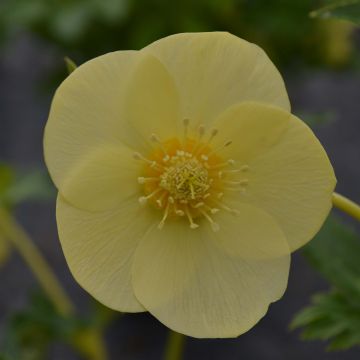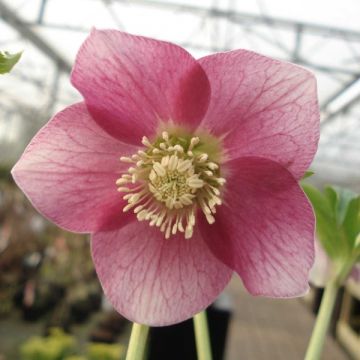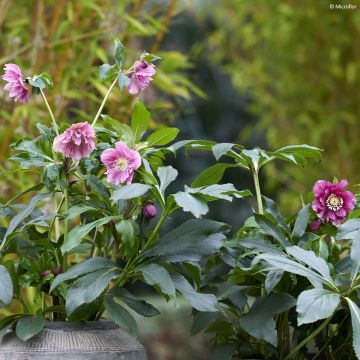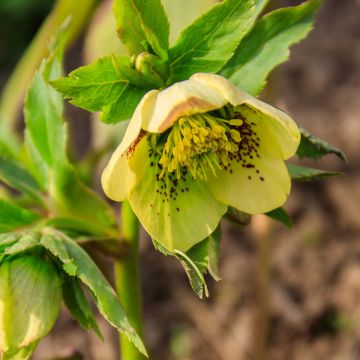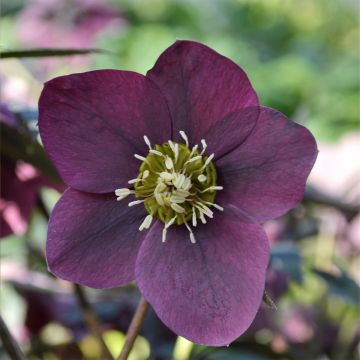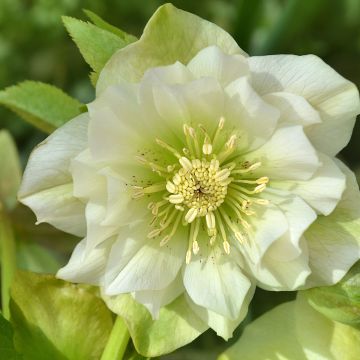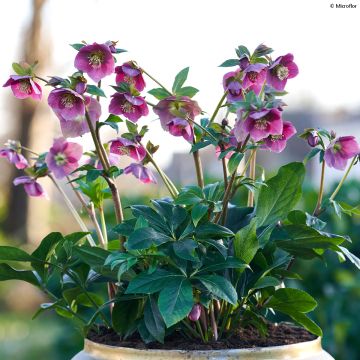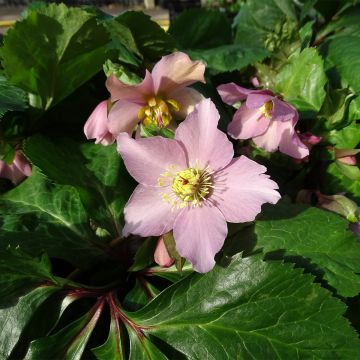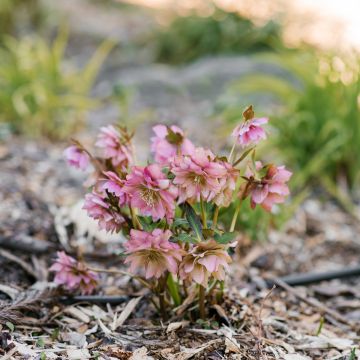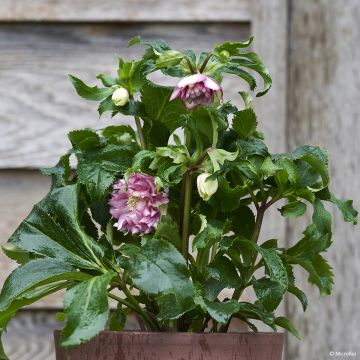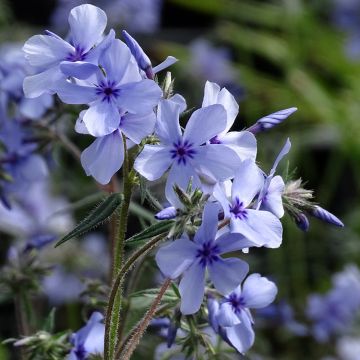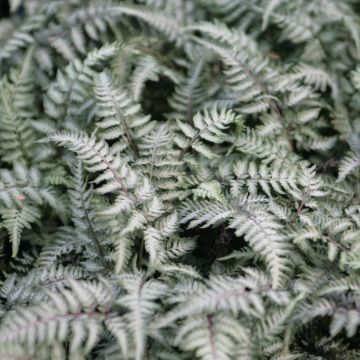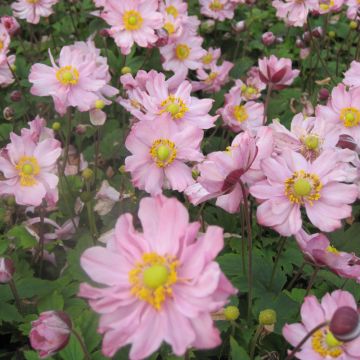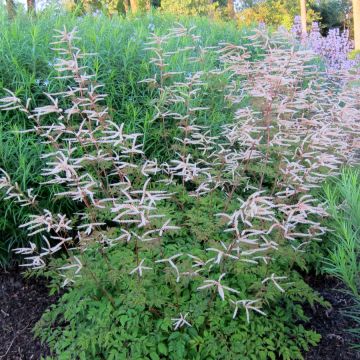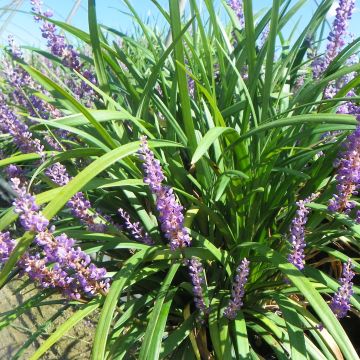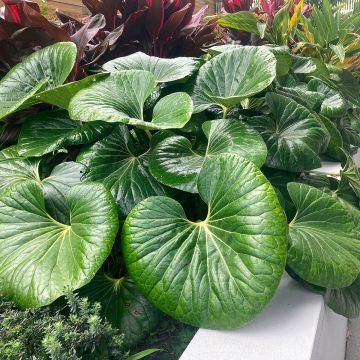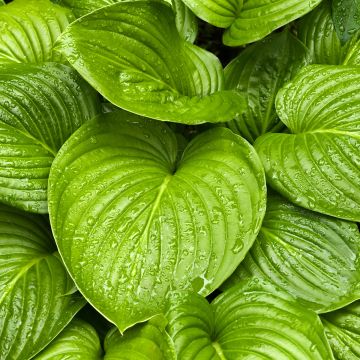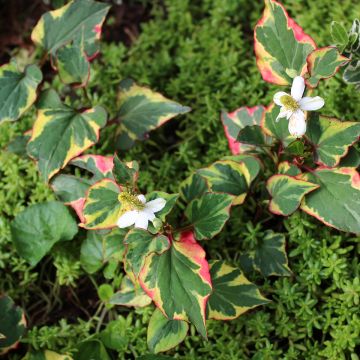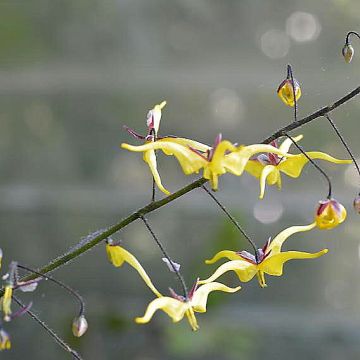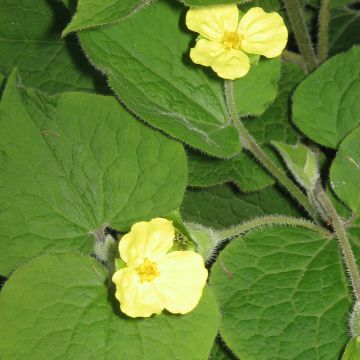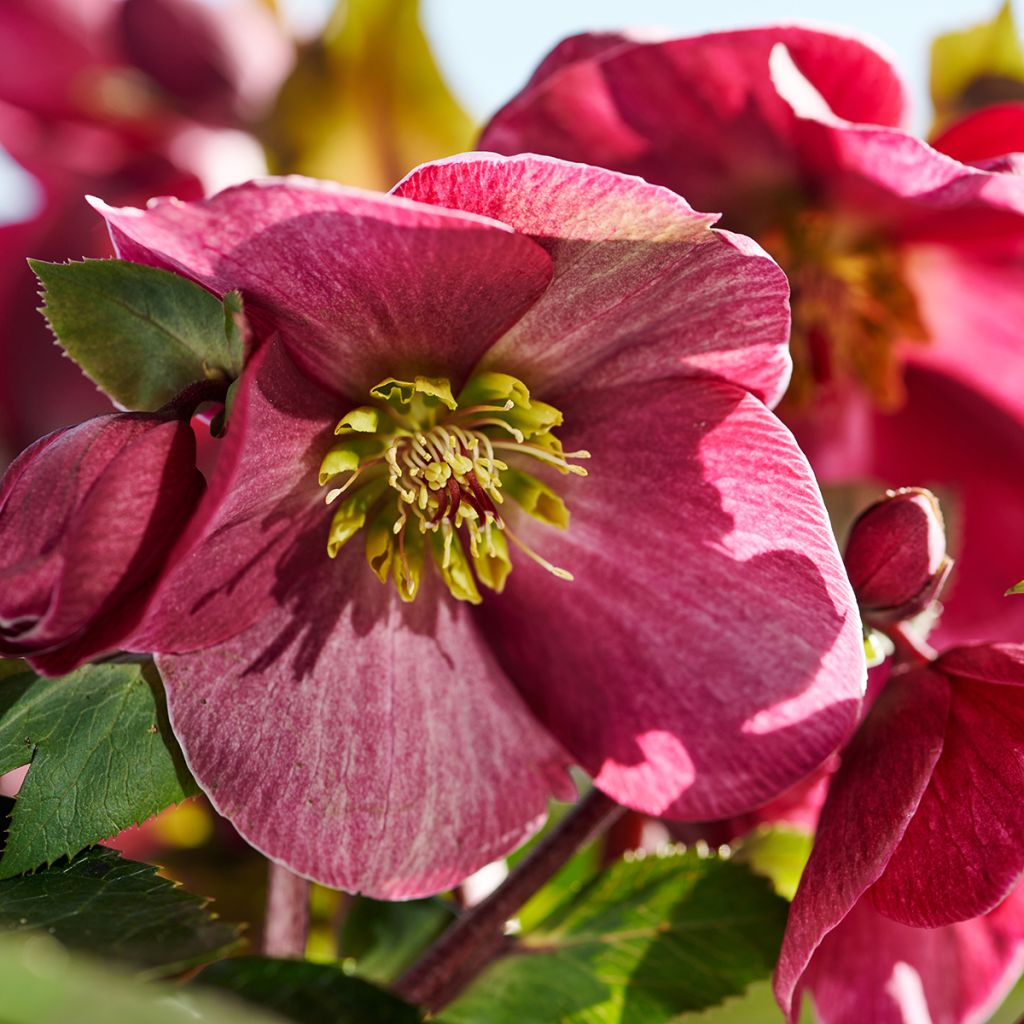

Helleborus hybridus (orientalis) ViV 'Scarletta'
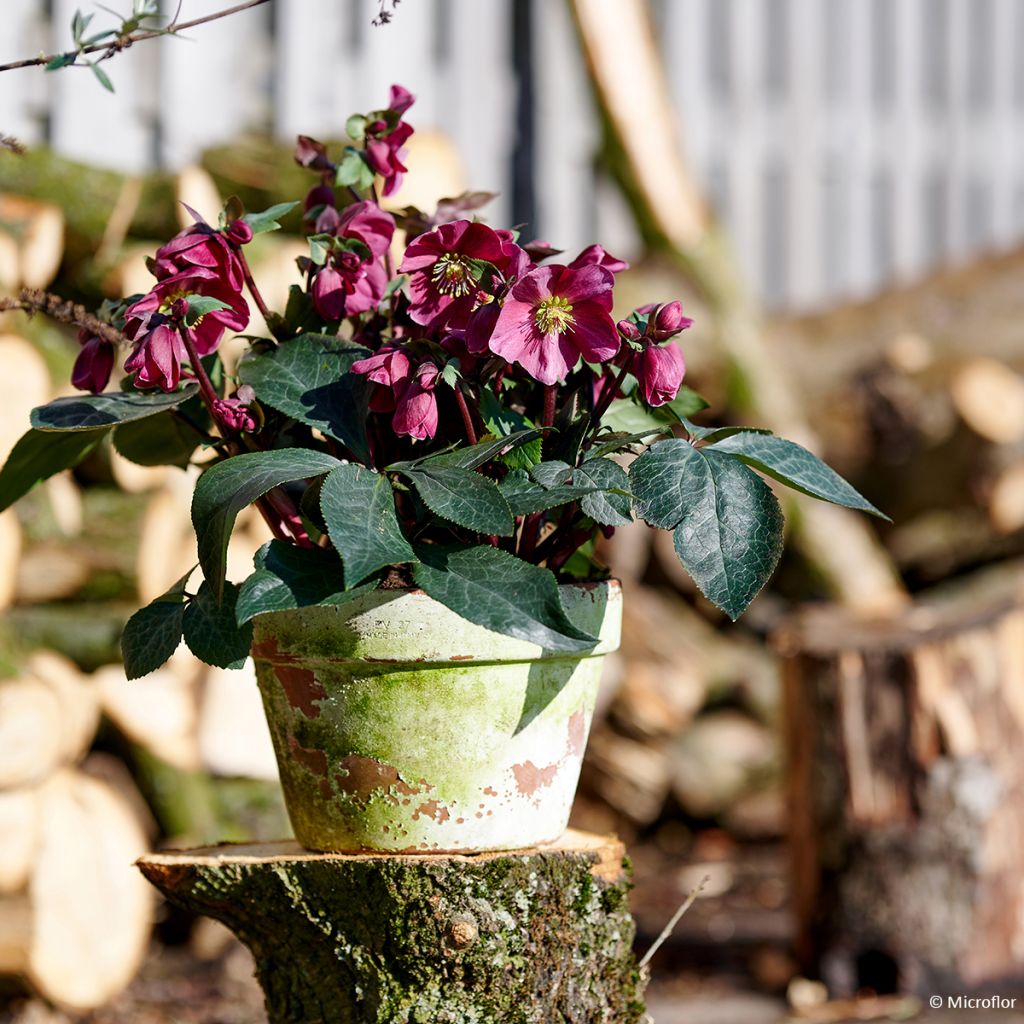

Helleborus hybridus (orientalis) ViV 'Scarletta'
Helleborus hybridus (orientalis) ViV 'Scarletta'
Helleborus x hybridus (orientalis) ViV® Scarletta
Lenten Rose, Oriental Hellebore
This item cannot be shipped to the selected country
Delivery charge from €5.90
More information
Schedule delivery date,
and select date in basket
This plant carries a 12 months recovery warranty
More information
We guarantee the quality of our plants for a full growing cycle, and will replace at our expense any plant that fails to recover under normal climatic and planting conditions.
From €5.90 for pickup delivery and €6.90 for home delivery
Express home delivery from €8.90.
Does this plant fit my garden?
Set up your Plantfit profile →
Description
The Oriental Hellebore ViV 'Scarletta' is a compact variety with stunning red flowers in winter. Flowering from January onwards, this Christmas Rose produces single flowers in light to dark red, enhanced by a golden centre. It is a robust and hardy perennial that is easy to grow in all regions, even in humus-bearing clayey soil. It will create beautiful borders in shaded areas, and its compact growth makes it easy to cultivate in pots. Plant it under the shade of deciduous trees, where it will bloom at the base in winter.
The Hellebore 'Scarletta' is a member of the Ranunculaceae family, which includes about sixty genera and around 2500 species.
Helleborus orientalis is native to Greece, Turkey, and the central and eastern Caucasus. It is a perennial plant that readily hybridises with other species, resulting in various colours and forms of hybrids. As a result, these hybrids are rarely given multiple names and are distinguished by their shape and colour characteristics. The hybrid Hellebore is a hardy plant that can tolerate temperatures as low as -15°C, naturally growing in forests, thickets, and clearings up to 2,000 m altitude.
The Scarletta cultivar is a Belgian selection of an extensive collection of ViV hybrids chosen for their compactness and floribundity. 'Scarletta' forms a clump about 35 cm in all directions. Its foliage consists of palmate basal leaves, which are slightly dentate, dark green, and glossy. These are evergreen leaves in winter, which only live for eight months and are regularly replaced by new leaves.
'Scarletta' blooms from January onwards. Short floral stems emerge from the clump of dark green leaves, above which single flowers open. The corolla, composed of five rounded petals, can measure up to 6 or 7 cm in diameter. Its colour ranges from light red to blood red, enhanced by a golden stamen, creating a dynamic contrast. Not fearing frost or the pale winter sun, the flowering period extends over several weeks. Hellebores do not like to be moved once established, and young shoots may take some time to flower. Therefore, choose their location carefully when planting.
This perennial will thrive under a leafy tree, allowing the winter sun to shine through while protecting it from the intense summer sun. It is a relatively easy plant to grow and can be easily cultivated in pots on your terrace due to its compact habit.
Hellebores are valuable perennial plants that brighten up the dark days of autumn and winter. You can create a winter-interest border with 'Scarletta' by combining it with other carefully chosen plants. Focus on decorative fruits such as those of Symphoricarpos. The Callicarpa bodinieri Imperial Pearl will reward you with tiny amethyst beads clustered along the branches. It is also a plant with decorative autumn foliage. Also, consider colourful barks in winter. The Cornus alba Baton Rouge is a winter dogwood with splendid coral-red branches. In the background, choose trees such as the Prunus maackii Amber Beauty, a small tree with white spring flowers and a fabulous orange bark.
Report an error about the product description
Helleborus hybridus (orientalis) ViV 'Scarletta' in pictures


Flowering
Foliage
Plant habit
Safety measures
Botanical data
Helleborus
x hybridus (orientalis)
ViV® Scarletta
Ranunculaceae
Lenten Rose, Oriental Hellebore
Cultivar or hybrid
ingestion
Cette plante est toxique si elle est ingérée volontairement ou involontairement.
Ne la plantez pas là où de jeunes enfants peuvent évoluer, et lavez-vous les mains après l'avoir manipulée.
Pensez à conserver l'étiquette de la plante, à la photographier ou à noter son nom, afin de faciliter le travail des professionnels de santé.
Davantage d'informations sur https://plantes-risque.info
Other Oriental Hellebore
Planting and care
The Oriental Hellebore 'Scarletta' grows in any neutral to moderately calcareous soil, or even slightly acidic, rich, light or clayey, in partial or light shade while sheltered from cold and dominant winds. South of the Loire, particular care should be taken to avoid direct sunlight during the hottest hours. This perennial can be planted from early autumn to spring. It thrives in deeply cultivated soil mixed with organic matter. To fertilise, use bone meal or another organic fertiliser. Water the plants well after planting and add a layer of mulch 2 to 5 cm thick. Regularly remove faded leaves to improve flowering. Ensure a planting distance of 30 to 40 cm between each plant to promote their development. The Hellebore does not tolerate stagnant water as it may cause rotting.
The roots should not completely dry out in summer. Hellebores can be affected by a fungal disease transmitted by aphids, known as black spot disease. Remove any stained leaves when the flower buds appear and fade flowers after the seed fall. They can also suffer from gray rot or die from crown rot. This often occurs due to poor growing conditions in excessively wet situations.
Plant this perennial on a balcony or terrace in a pot 4 to 5 times larger than its size, as it needs space to develop its root system. Very hardy, this Hellebore can withstand temperatures as low as -15°C or even lower, allowing it to adapt to almost all regions.
Planting period
Intended location
Care
This item has not been reviewed yet - be the first to leave a review about it.
Shade-loving perennials
Haven't found what you were looking for?
Hardiness is the lowest winter temperature a plant can endure without suffering serious damage or even dying. However, hardiness is affected by location (a sheltered area, such as a patio), protection (winter cover) and soil type (hardiness is improved by well-drained soil).

Photo Sharing Terms & Conditions
In order to encourage gardeners to interact and share their experiences, Promesse de fleurs offers various media enabling content to be uploaded onto its Site - in particular via the ‘Photo sharing’ module.
The User agrees to refrain from:
- Posting any content that is illegal, prejudicial, insulting, racist, inciteful to hatred, revisionist, contrary to public decency, that infringes on privacy or on the privacy rights of third parties, in particular the publicity rights of persons and goods, intellectual property rights, or the right to privacy.
- Submitting content on behalf of a third party;
- Impersonate the identity of a third party and/or publish any personal information about a third party;
In general, the User undertakes to refrain from any unethical behaviour.
All Content (in particular text, comments, files, images, photos, videos, creative works, etc.), which may be subject to property or intellectual property rights, image or other private rights, shall remain the property of the User, subject to the limited rights granted by the terms of the licence granted by Promesse de fleurs as stated below. Users are at liberty to publish or not to publish such Content on the Site, notably via the ‘Photo Sharing’ facility, and accept that this Content shall be made public and freely accessible, notably on the Internet.
Users further acknowledge, undertake to have ,and guarantee that they hold all necessary rights and permissions to publish such material on the Site, in particular with regard to the legislation in force pertaining to any privacy, property, intellectual property, image, or contractual rights, or rights of any other nature. By publishing such Content on the Site, Users acknowledge accepting full liability as publishers of the Content within the meaning of the law, and grant Promesse de fleurs, free of charge, an inclusive, worldwide licence for the said Content for the entire duration of its publication, including all reproduction, representation, up/downloading, displaying, performing, transmission, and storage rights.
Users also grant permission for their name to be linked to the Content and accept that this link may not always be made available.
By engaging in posting material, Users consent to their Content becoming automatically accessible on the Internet, in particular on other sites and/or blogs and/or web pages of the Promesse de fleurs site, including in particular social pages and the Promesse de fleurs catalogue.
Users may secure the removal of entrusted content free of charge by issuing a simple request via our contact form.
The flowering period indicated on our website applies to countries and regions located in USDA zone 8 (France, the United Kingdom, Ireland, the Netherlands, etc.)
It will vary according to where you live:
- In zones 9 to 10 (Italy, Spain, Greece, etc.), flowering will occur about 2 to 4 weeks earlier.
- In zones 6 to 7 (Germany, Poland, Slovenia, and lower mountainous regions), flowering will be delayed by 2 to 3 weeks.
- In zone 5 (Central Europe, Scandinavia), blooming will be delayed by 3 to 5 weeks.
In temperate climates, pruning of spring-flowering shrubs (forsythia, spireas, etc.) should be done just after flowering.
Pruning of summer-flowering shrubs (Indian Lilac, Perovskia, etc.) can be done in winter or spring.
In cold regions as well as with frost-sensitive plants, avoid pruning too early when severe frosts may still occur.
The planting period indicated on our website applies to countries and regions located in USDA zone 8 (France, United Kingdom, Ireland, Netherlands).
It will vary according to where you live:
- In Mediterranean zones (Marseille, Madrid, Milan, etc.), autumn and winter are the best planting periods.
- In continental zones (Strasbourg, Munich, Vienna, etc.), delay planting by 2 to 3 weeks in spring and bring it forward by 2 to 4 weeks in autumn.
- In mountainous regions (the Alps, Pyrenees, Carpathians, etc.), it is best to plant in late spring (May-June) or late summer (August-September).
The harvesting period indicated on our website applies to countries and regions in USDA zone 8 (France, England, Ireland, the Netherlands).
In colder areas (Scandinavia, Poland, Austria...) fruit and vegetable harvests are likely to be delayed by 3-4 weeks.
In warmer areas (Italy, Spain, Greece, etc.), harvesting will probably take place earlier, depending on weather conditions.
The sowing periods indicated on our website apply to countries and regions within USDA Zone 8 (France, UK, Ireland, Netherlands).
In colder areas (Scandinavia, Poland, Austria...), delay any outdoor sowing by 3-4 weeks, or sow under glass.
In warmer climes (Italy, Spain, Greece, etc.), bring outdoor sowing forward by a few weeks.

































